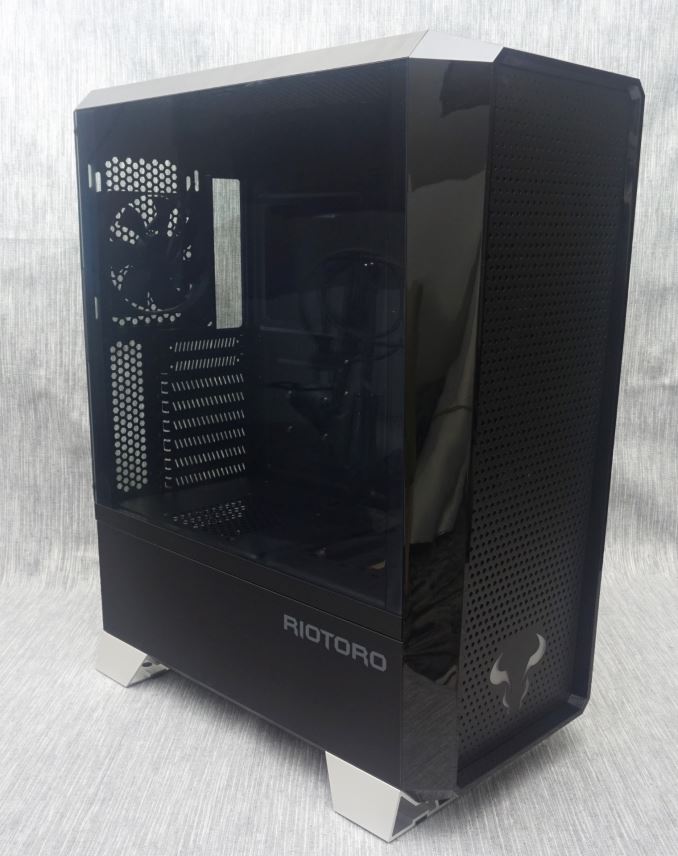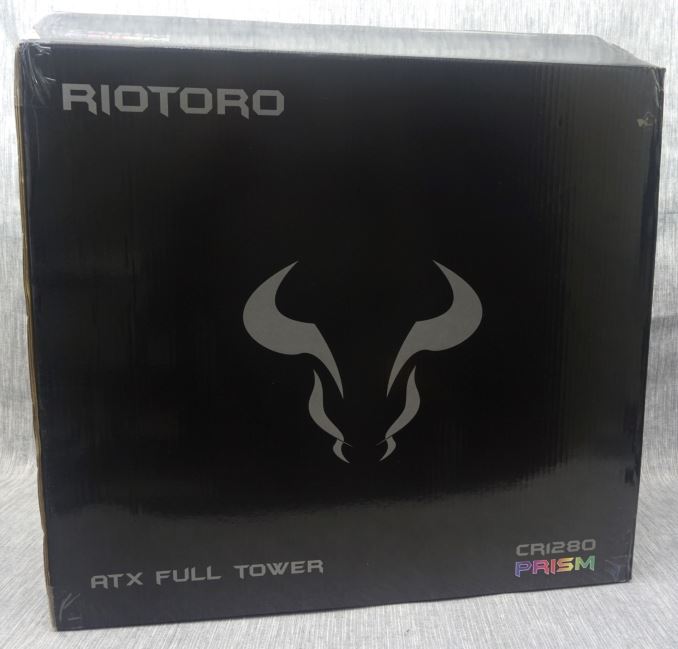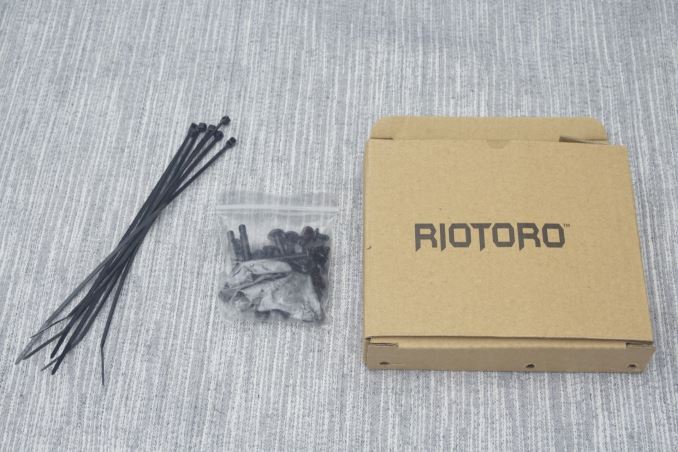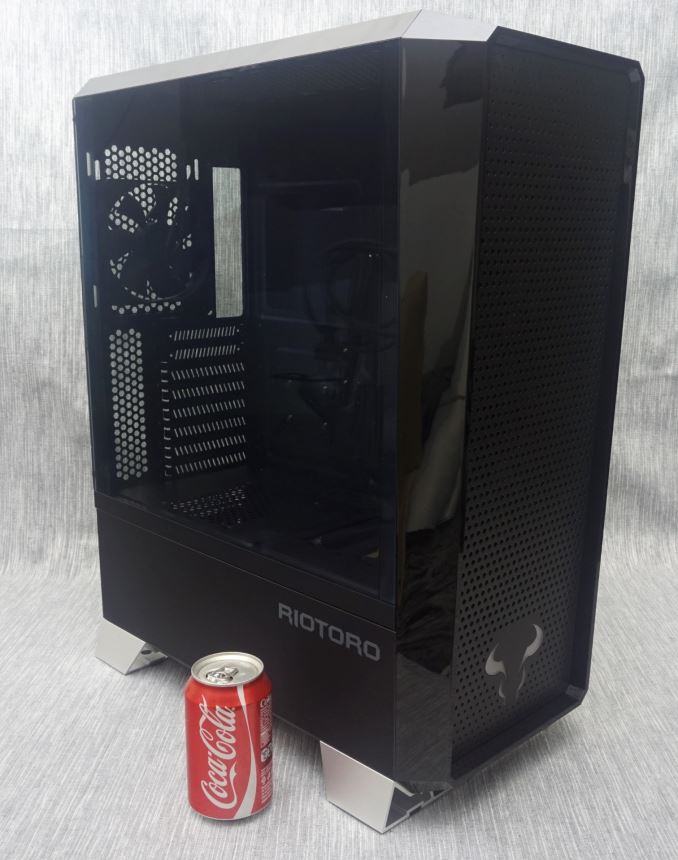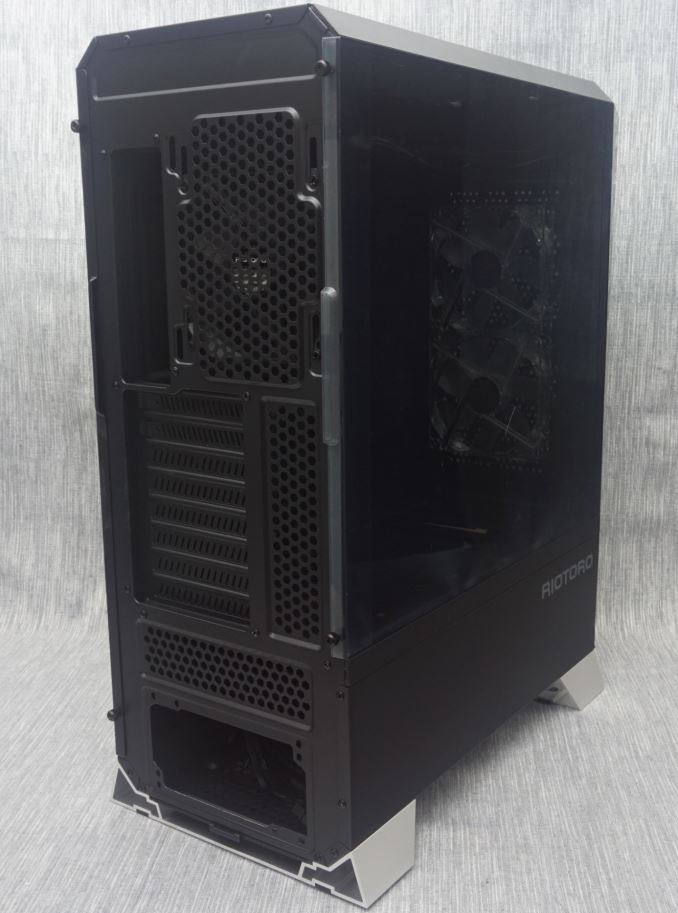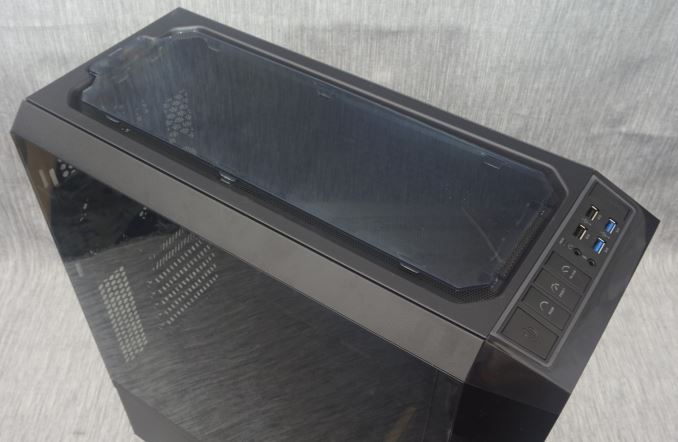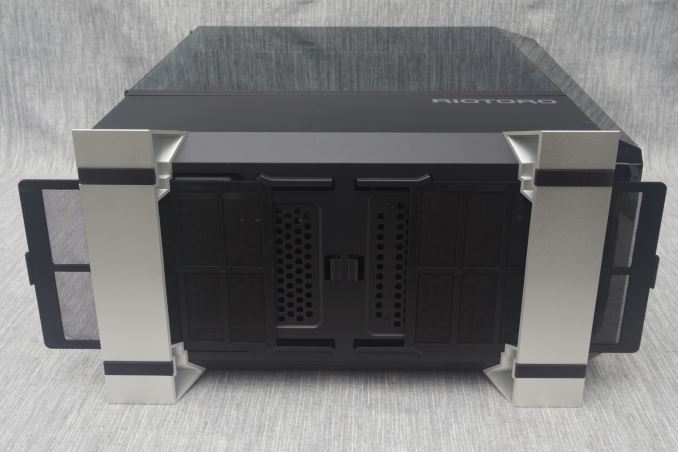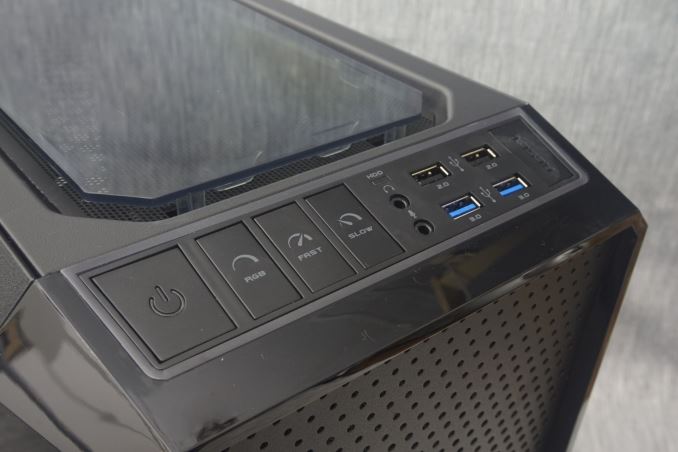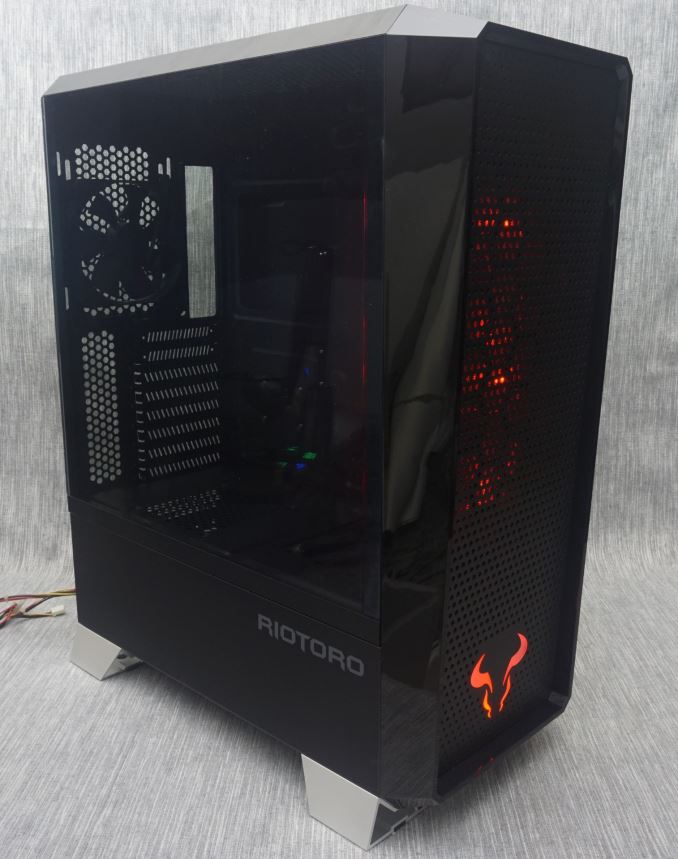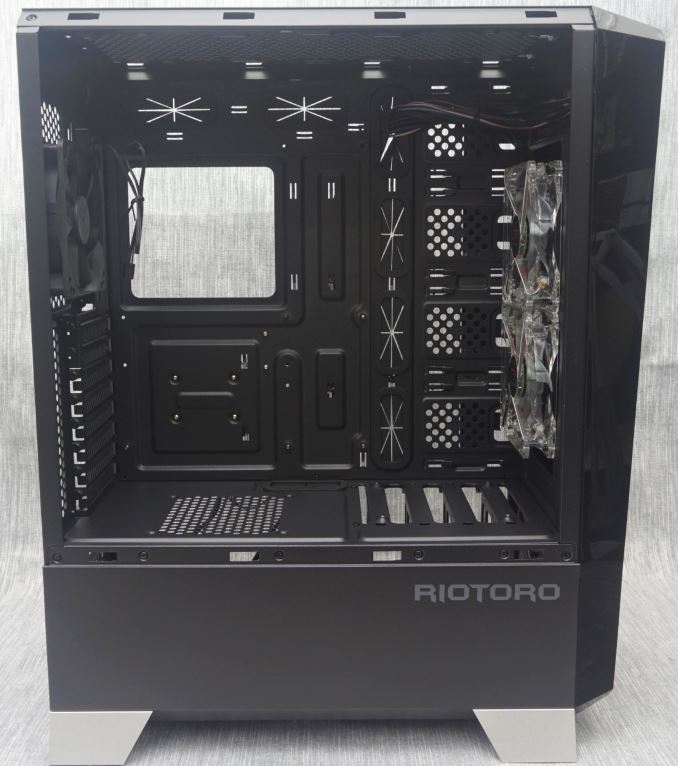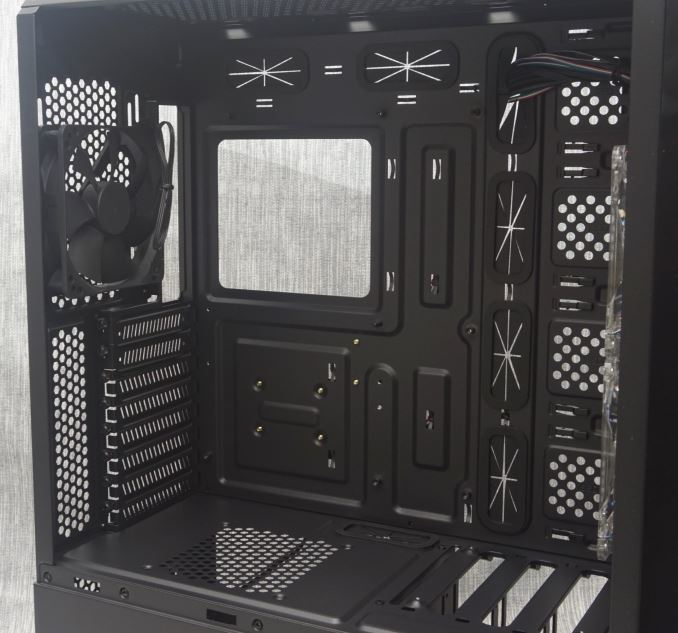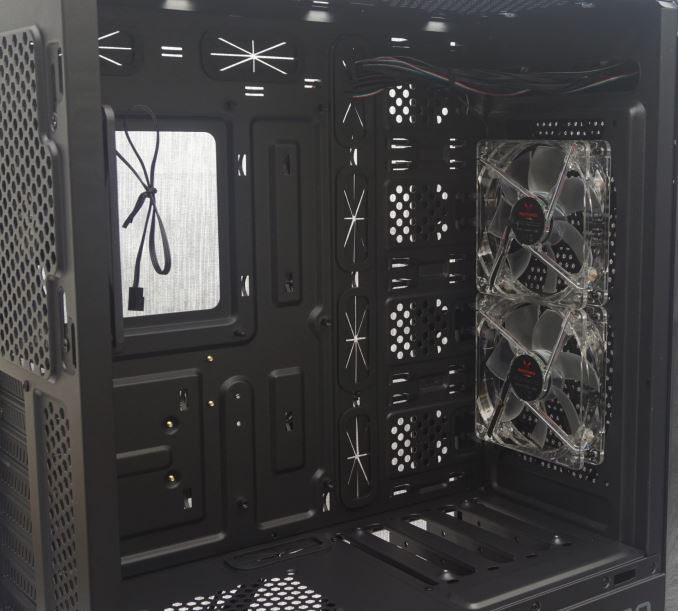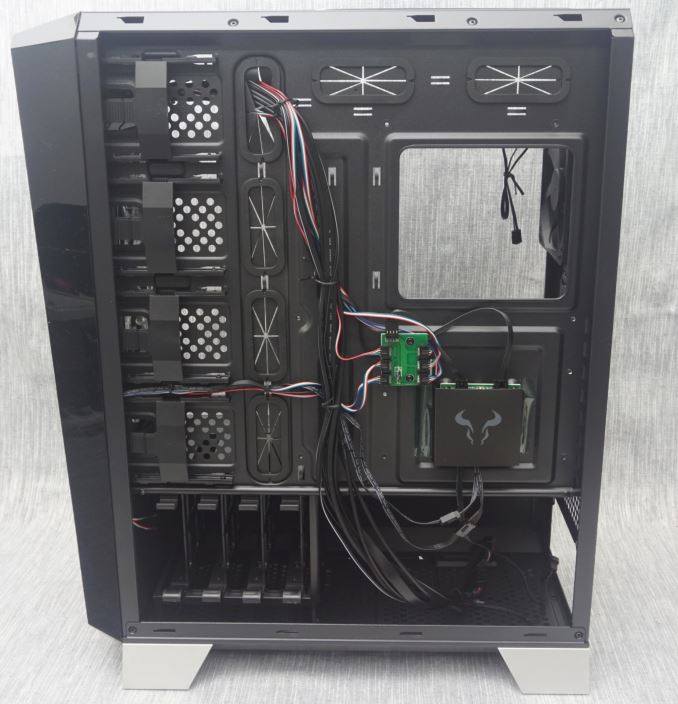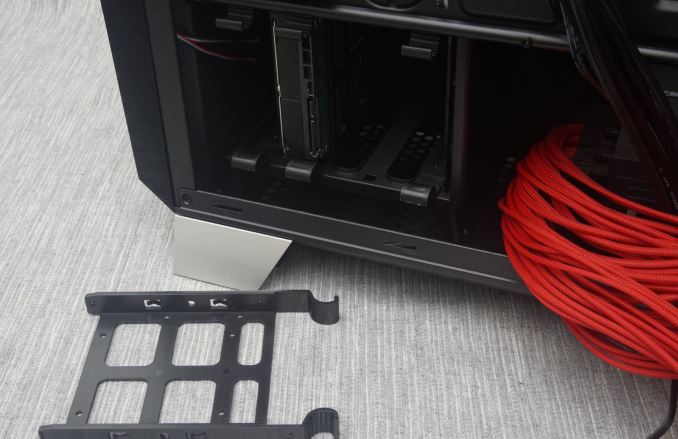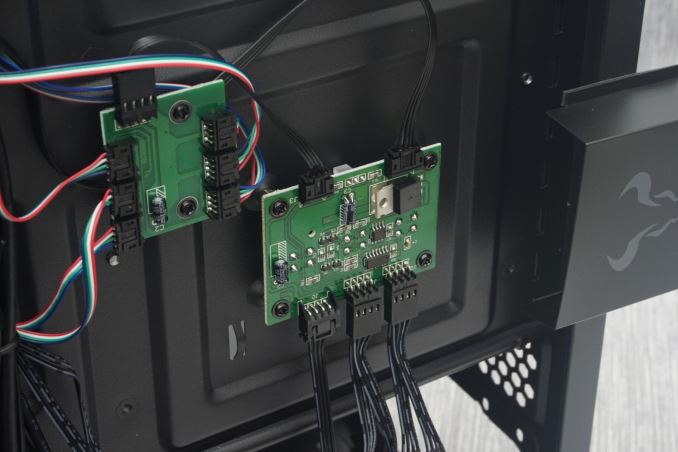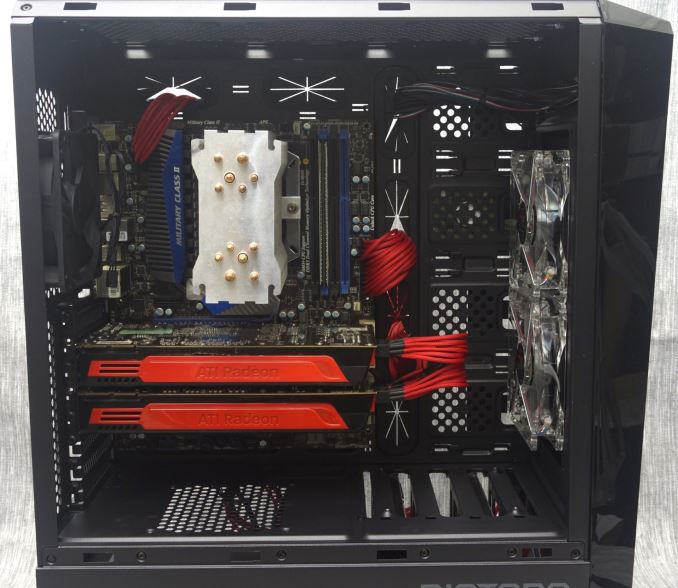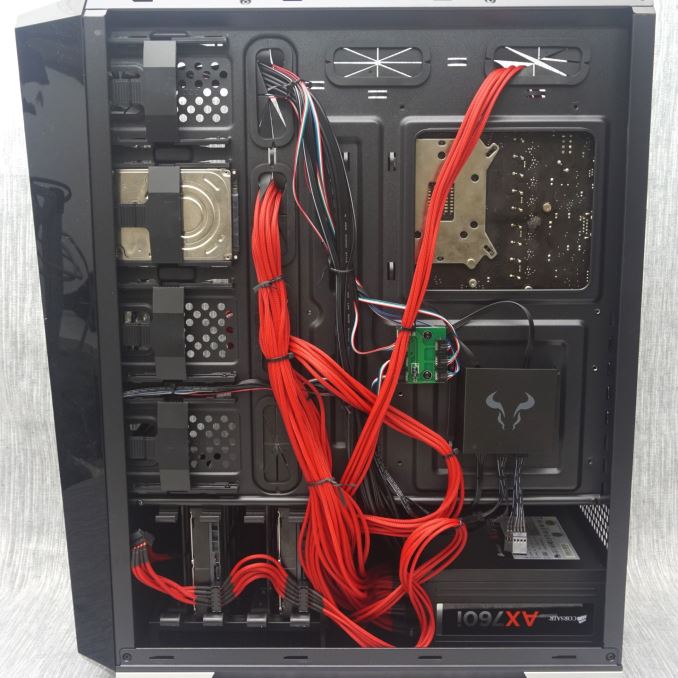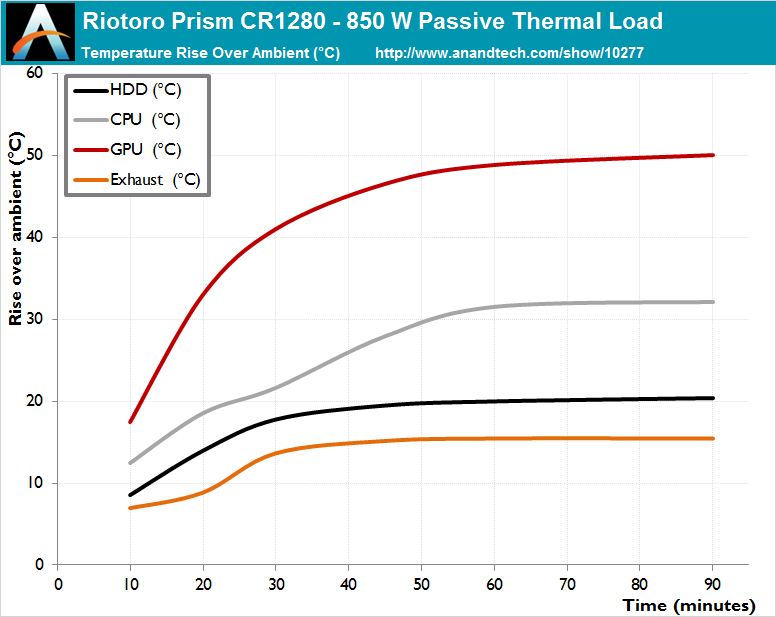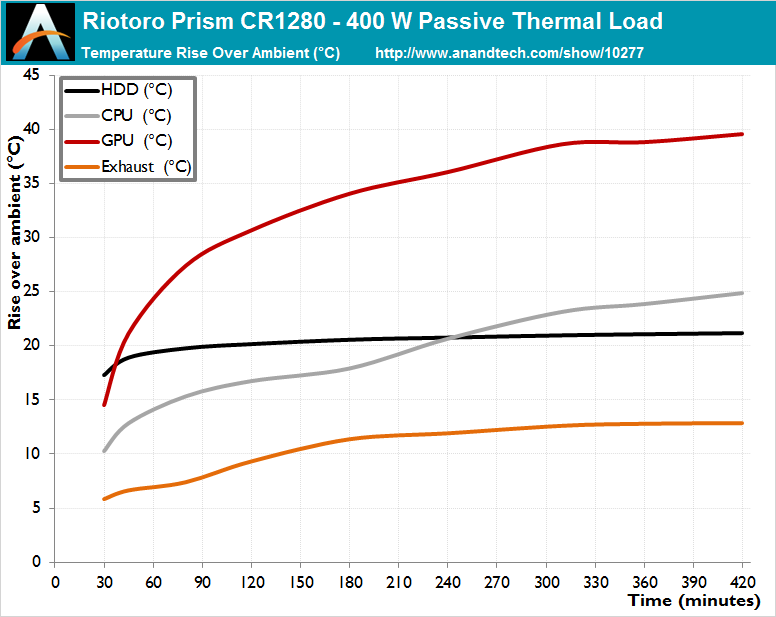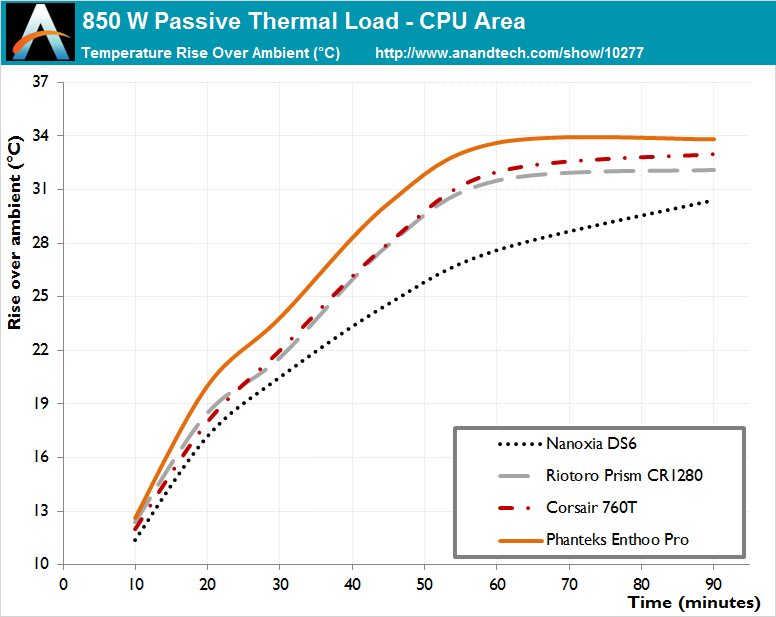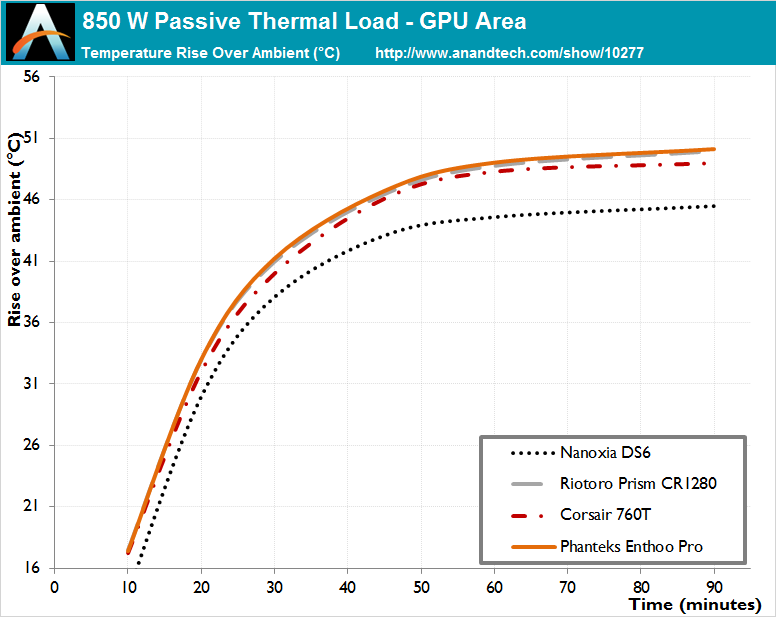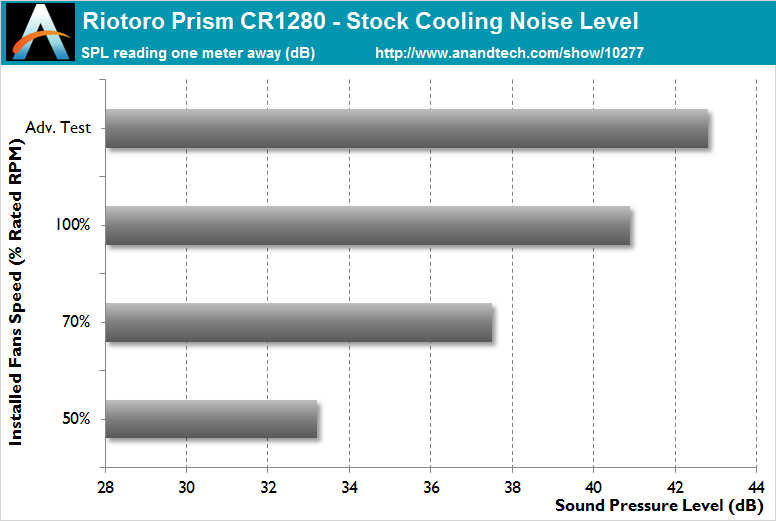
Original Link: https://www.anandtech.com/show/10277/the-riotoro-prism-cr1280-case-review
The Riotoro Prism CR1280 Case Review
by E. Fylladitakis on April 26, 2016 9:01 AM EST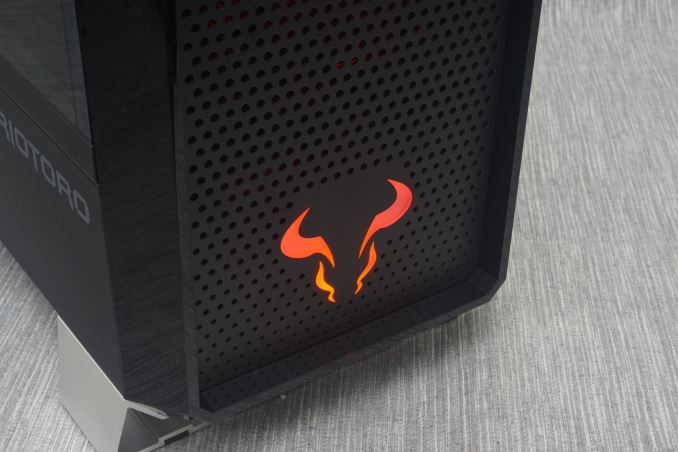
Today we are having our first encounter with Riotoro, a manufacturer of personal computer cases, power supply units, cooling-related products and peripherals. Riotoro is a company that came to be from former NVIDIA and Corsair employees. The current number of products they offer is small, consisting of just a couple of cases and mice, but we expect that to change rapidly in the not so distant future.
Introduction
Riotoro is somewhat of a new company, as they came into business in 2015, however they originally made their products available into South America first. These markets are set to be the primary focus of the US-based company in the near future as well, which might explain the Spanish name (Riotoro roughly translates to "Bull's River" in English, and there is an actual river in Puerto Rico that is sharing the same name).
Nevertheless, the company is now making their products available in the North America and is marking their debut with the Prism CR1280, a large (58 cm, ~23-inch) tower case with RGB lighting. Riotoro is claiming that this is the world's first full RGB case, capable of 256 colors. The company is also claiming that the Prism CR1280 also has "unprecedented cooling performance", high durability, "improved cable management" and a "unique, powerful design". With the MSRP of $140 and a retail price that is likely to be lower than list, the Prism CR1280 seems to be a very interesting product if it can deliver half of what Riotoro's marketing is claiming.
| Riotoro CR1280 Prism | ||
| Motherboard Size | EATX, ATX, Micro-ATX, Mini-ITX | |
| Drive Bays | External | - |
| Internal | 4 × 3.5" (internal drive cages) 4 × 2.5" (Rear of motherboard tray) |
|
| Cooling | Front | 2 × 120 mm (2 × 120 mm RGB LED included) |
| Rear | 1 × 120 mm or 140 mm (none included) | |
| Top | 3 × 120 mm or 2 × 140 mm (none included) | |
| HDD | - | |
| Bottom | - | |
| Radiator Support | Front | Up to a 280 (2 × 140 mm) |
| Rear | Up to 140 mm | |
| Top | Up to a 280 (2 × 140 mm) or 360 mm (3 × 360 mm) | |
| Side | - | |
| Bottom | - | |
| I/O Port | 2× USB 3.0, 2× USB 2.0, 1× Headphone, 1× Mic | |
| Power Supply Size | ATX | |
| Clearances | HSF | 184 mm |
| PSU | Up to 200 mm | |
| GPU | 400 mm | |
| Dimensions | 580 mm × 225 mm × 475 mm 22.83 in × 8.86 in × 18.7 in |
|
| Prominent Features (as per the marketing spiel) | · World’s 1st Fully RGB CASE with unparalleled personalization options. · Taking up the best and adding our own improvements to cases most successful technologies. · DAT (direct airflow technology) built from the ground up to cool the most demanding and hotter product providing unprecedented cooling performance by directing air where it is most needed. · ICM : improved Cable management design! For the most demanding users and configurations. · Durable and strongly built to last many years. · Next generation Full Tower design. Unique and powerful design, that takes your rig to the next level and to the future. |
|
| Price | $140 (MSRP) | |
Packaging & Bundle
Riotoro supplies the Prism CR1280 in a very large and sturdy cardboard box that instantly hints the actual size of the case. The artwork is very simple, with only the company's logo decorating the main sides of the box. There is no picture of the case itself or any significant information printed on the box itself. Inside the box, the case is well secured between thick Styrofoam slabs and wrapped in a soft nylon bag. The packaging ought to offer more than sufficient protection during shipping.
As we received an early production sample, we have no clear view of what the bundled items will be. The company supplied us with just the basic screws and a few cable ties, with no manual or accessories to speak of. Since Riotoro is coming into a highly saturated market is going to have to strongly compete in terms of value, we do expect that the bundle will be kept to a minimal, although a basic manual is obviously going to be included with retail products.
It is worth noting that the font being used for Riotoro looks eerily similar to the ASUS Republic of Gamers' font. We're not sure if this is intentional, or if there the original font is owned/licenced by one of the two or an external entity. It's an interesting thing to mention at least.
The Exterior of the Riotoro Prism CR1280
The Prism CR1280 sports a postmodern design, mostly based on complex geometric shapes with sharp angles and edges. Most of the case is black, with the exception of the silver aluminum feet. The steel frame and right side panel of the case are well sprayed with a matte black paint, as is the front part of the plastic faceplate. The surrounding frame of the plastic faceplate is sprayed with a highly reflective piano black paint. As for the left side panel, it is entirely made out of Plexiglas, creating an essentially frameless left side panel window.
Measuring 58 cm tall, 22.5 cm wide and 47.5 cm deep (22.8 × 8.7 × 18.7-inches), the Prism CR1280 is a relatively large tower case, especially for a model without a single external 5.25" device opening. With a volume of 0.062 m3 (62 liters), it is only slightly smaller than the similar Cooler Master MasterCase 5 (65.9 liters) and the cubic Corsair Carbide Air 540 (63.1 liters), but much larger than a typical Midi ATX case, such as the Corsair 450D (51.6 liters). Despite the size, the Prism CR1280 is relatively lightweight, tipping the scales at just 8 kg.
11.2 oz/330 ml soda can inserted as size reference
A look at the rear of the case reveals that the PSU compartment is located at its bottom, with a significant distance between it and the main system. Other than that, there is nothing of noteworthy to be discussed about the rear side of the Prism CR1280, except perhaps the observation that there are no round holes for liquid cooling systems and cables.
Riotoro placed the front I/O ports and buttons at the top front of the case, on a slightly tilted surface. Considering that the case is rather tall, the position of the buttons and I/O ports clearly favors placement under a desk, which makes the use of a windowed side panel rather questionable. The larger power-on button can be seen to the left, followed by the RGB lighting and the fan speed control switches. The 3.5 mm audio jacks can be seen at the center of the formation, with the four USB ports (2 × USB 2.0, 2 × USB 3.0) to their right. A strangely large reset key rests to the rightmost part of the formation.
A Plexiglas cover can also be found at the top of the case, made of the same material as the side panel, just a little thinner. It actually has no specific function other than being a slight aesthetic decoration if the Prism CR1280 is left as is from the factory. However, we found that if the RGB fans are moved to the top of the case, the Plexiglas will absorb part of their light and appear as if the top of the case is being illuminated, creating a nice visual effect inside dark rooms.
Two large nylon filters can be found at the bottom of the case, one for the PSU and one for the HDD area. The PSU filter can be removed by pulling it from the back of the case, the HDD area filter from the front. The entire faceplate acts as a filter for the front intake fans as well but, strangely, the filter is not removable. The whole panel needs to come off and cleaned by using a strong blower or vacuum cleaner.
The large aluminum feet of the Prism CR1280 are very strong and add to the overall aesthetic value of the case. Rubber strips are installed to prevent the case from moving/sliding on a flat surface, as well as to prevent damaging softer surfaces. That being said, the edges of these aluminum feet are extremely sharp and can easily damage wooden, vinyl and other soft surfaces. Caution is required when handling the case while it is sitting on any soft surface, lifting it straight up and without tilting the case to any side, otherwise the very hard and sharp corners can easily damage the surface.
The I/O ports are surrounded by a plastic clear ring that is illuminated by several LEDs that provide very good and uniform distribution of the light. Riotoro's logo at the lower part of the faceplate is also illuminated, as the two included 120 mm cooling fans are.
When fully lit, the lighting of the Prism CR1280 is adequate as far as the faceplate and I/O area are concerned, but relatively weak to the interior of the case. There is only so much that half a dozen LEDs can do inside a case this large. The RGB lighting can be controlled by the button found at the top of the faceplate. It is almost amusing that the RGB button is right next to the power button, as one could imagine accidentally hitting the power button by accident.
The RGB capabilities of the Prism CR1280 are adequate, especially considering that there is no USB interface and everything is being controlled via a single button. Riotoro programmed the controller to have eight settings and the button simply cycles through them. The first six settings are standard colors (Red, Green, Blue, White, Yellow and Pink) and the seventh setting initiates the “rainbow” effect, slowly cycling through 256 colors. The eight setting is the “custom color” setting and simply holds whichever color was active on the “rainbow” setting when the button was pressed. If the button is pressed for three seconds, the controller turns the lighting off.
The Interior of the Riotoro Prism CR1280
The interior of the Prism is entirely black, including all screws and standoffs, with the exception of the semi-clear front intake fans. It is essentially split into two parts, one for the main system that is accessible from the left side panel and one for the PSU compartment/drives area that is accessible from the right side panel. The main system area is very roomy, as expected from a case of such proportions without external drive cages at all. There are many openings for the cables above and to the side of the motherboard, all with rubber grommets installed. There is also an opening leading directly to the PSU compartment. A hole is cut on the motherboard's tray to allow for the installation of aftermarket coolers without having to remove the motherboard, but we found the opening to be strangely small and is likely to cause compatibility problems with several of the newer motherboards, forcing the removal of the motherboard if the cooler has to be installed/removed.
The system area of the Prism CR1280 is littered with fan mounting slots. Riotoro installed two 120 mm RGB fans as a front intake, but 140 mm fans or up to a 240/280 mm radiator can fit there. Similarly, a simple black 120 mm fan is installed to the rear of the case, but a 140 mm fan can also fit. The rear mounting slot allows for the adjustment of the fan’s height by about one inch. Three more 140 mm or 120 mm fans or up to a 360 mm radiator can be installed at the top of the case. Finally, there is also the option of installing internal fans on the floor of the main system, one above the PSU and one above the 3.5” drives cage, providing additional cooling to these components.
Moving on to the right side of the case, we can see four 2.5” drive mounting frames along the side of the motherboard’s tray. Unlike most similar setups, the drives are not simply inserted to these plastic frames, but the frames have to be removed, installed on a drive and then reinserted along with the drive. This takes a few extra moments but it is far more secure, as the drive cannot be removed from the frame if the frame itself is not removed.
Another four 3.5” or 2.5” drives can be installed in the cage in front of the PSU compartment, using plastic trays. These plastic trays lock on 3.5” drives without the need of screws, but one screw can be added for extra security. 2.5” drives can only be installed on the trays by using screws.
The Speed/RGB controller can also be seen at the back of the motherboard’s tray, protected by a simple magnetic cover. The speed controller can power and control up to four fans, two of which are the two intake RGB fans of the case. If the user wants to, the two RGB fans can be replaced with other fans, but the case would lose the largest portion of its lighting capabilities.
For the means of this review, we installed a Corsair AX760i with the red cable set, for strong visual contrast. The PSU compartment is roomy and can easily house a PSU up to 200 mm long, so it fits inside the Prism CR1280 without issues. Do note that the distance between the PSU compartment and the motherboard is large and, as a result, the CPU power cable of the AX760i is barely long enough. High end PSU models with long cables are highly recommended, or an extension will be necessary for the CPU 12V EPS cable.
A standard ATX system fits inside the system area of the Prism CR1280 very comfortably. Massive cards up to 400 mm long can fit, even with the front intake fans installed. There is a lot of clearance above the motherboard, allowing for the installation of 25 mm thick radiators along with their fans. 38 mm thick radiators can still cause compatibility problems though, as the top panel openings are not offset to the left side of the case.
We would like to point out that the system area of the Prism CR1280 is clearly designed with ATX motherboards in mind, rather than EATX or larger. An EATX motherboard can be installed but it will partially block the cable openings next to it. There are no other cable openings other than those across the edge of the motherboard, so it could make the management of the cables a little troubling. This is also true for very long graphics cards, as they will run across the cable openings and the cables will have to the installed before the cards.
Test setup
Professional testing requires the emulation of real-world situations but with repeatable results; thus, a perfectly controllable test setup and environment are required, especially for comparable results. Testing the thermal performance of any case with a typical real-world setup technically limits the comparability of the results to this setup alone, as an active system interacts with its environment and the change of a single component would alter myriads of variables. As such, we developed synthetic loads that emulate the thermal output of real systems, which however are passive, steady and quantifiable. As such, the thermal testing now displays the thermal capabilities of the case alone, as if it would have to deal with the entire thermal load by itself, regardless of the system that would be installed inside it. Laboratory data loggers are being used to monitor the PT100 sensors and control the safety relays, which are fully accessible via our custom software. Three such loads have been developed; the ATX version simulates a 200W CPU, 50W VRM, 30W RAM and 4 × 120W GPU card thermal load. Finally, three 3.5" HDD dummy loads have also been created, with each of them converting 30 W of electrical power to thermal, bringing the total thermal load of the ATX test setup up to 850 Watts. As such, the thermal load is immense and only the best of cases will be able to handle it for more than a few minutes, we are also performing a test with a thermal load of 400W, with all of the aforementioned components except the HDD drives at about 42% power, which is more suitable for the majority of cases.
Thermal testing has been performed with all of the case's stock fan operating at maximum speed. Noise testing has been performed with a background noise level of 30.4dB(A). Advanced noise testing is also being performed, in order to assess the ability of the case to dampen the noise of the components installed inside it. This includes the installation of two noise-generating sources (strong fans) inside the case, one positioned approximately over the first expansion slot and one over the CPU area, which generate ≈ 44.2 dB(A) when unobstructed. During the advanced noise test, all stock cooling options of the case are entirely disabled.
Results and discussion
Considering the size and design of the Riotoro Prism CR1280, its thermal performance was foreseeable, yielding results very close to other similarly sized designs. Using the stock cooling fans, the Prism CR1280 performs slightly worse than the Phanteks Enthoo Pro and the Corsair Graphite 760T. However, the stock cooling fans of both of these cases are superior to those of the Prism CR1280, as the company strangely installed 120 mm fans only. Therefore, the Prism CR1280 is not thermally inferior as a case design, but the significantly lower airflow of the stock cooling fans does not allow it to properly compete with many rivaling offerings.
The use of 120 mm fans has another side effect - noise. With its fans at their maximum speed, the Prism CR1280 is a loud case, with our instruments reading 40.9 dB(A) coming from the stock fans alone. Although this is not a very bad result, it will be annoying for a very significant percentage of users. We generally like to see figures below 38 dB(A) here, which is an audible but generally comfortable result. With the speed of the fans reduced down to 50% though, the Prism CR1280 does turn silent, with a reading of just 33.2 dB(A). This indicates that the bulk of the noise does not come from the engines of the fans themselves, but it is aerodynamic noise, a side effect of trying to push a lot of air through a limited radius. Larger fans would help dramatically, as they would maintain the same airflow at much lower noise levels.
With so many vents and openings, the Prism CR1280 is clearly not a case designed to dampen the noise generated by the system. Our second test using the dummy test source held no surprises either, as the sound dampening capabilities of the Prism CR1280 were proven to be very low. The sound pressure generated by our dummy noise source was reduced by just 1.4 dB(A), from 44.2 dB(A) to 42.8 dB(A). This is a very small difference, indiscernible for a human ear.
Conclusion
The Prism CR1280 is not meant to be subtle, with Riotoro trying to make the CR1280 as attractive as possible without making it kitschy. Still, the CR1280 is clearly designed with home users or, more specifically, gamers in mind. It could also appear to some professionals that require very powerful systems and are not concerned about the lack of external drive bays, such as some artists and engineers. Due to its size, appearance and cost, it is unlikely that the Prism CR1280 will appeal to anyone beyond these target groups.
Riotoro did a fine job with the quality of their first design. The overall mechanical strength of the Prism CR1280 is very good, with a strong steel chassis and good quality plastics. There are no sharp edges or other issues that would indicate a bad/cheap design. The paint job is very well applied and the Plexiglas panels appear to be of good quality. That being said, the CR1280 is certainly not the most durable case that we have ever tested, but its quality is more than acceptable for its price range and class.
As a design, the thermal performance of the Prism CR1280 is great, easily competing with other cases of similar size and price. However, the stock 120 mm fans were, in our opinion, a poor design choice, as the use of 140 mm fans would increase the stock thermal performance and lower the generated noise without adding much to the cost. Furthermore, as the RGB lighting of the case is essentially based on the front intake fans, these cannot be replaced without essentially disabling the RGB capabilities of the case.
That being said, the implementation of RGB lighting using LED fans is clearly problematic. It limits the cooling options of the user, who is forced to use these fans somewhere in the case, and has the lighting coming from only the area where the fans are installed, leaving many spots in the dark. We would clearly prefer the lighting to be entirely independent of the case’s cooling system, such as, for example, LED strips across the bottom and top of the system area or a LED lamp at the front top corner of the case. However, such options were likely to push the Prism CR1280’s retail price significantly higher and Riotoro had to keep their first case cost-effective. Perhaps we will see such lighting options applied to future, more expensive designs of the company.
In summary, the Prism CR1280 is a product of fine quality, very spacious for powerful systems and with good expandability options. It is not a subtle product, clearly designed to attract attention, unsuitable for spaces (and users) that dictate understated designs. The MSRP price of $140 is reasonable and we expect the retail price to be lower than that, making it an appealing option to advanced home users and gamers that want a spacious, high performance case, especially if they have RGB peripherals to match.

